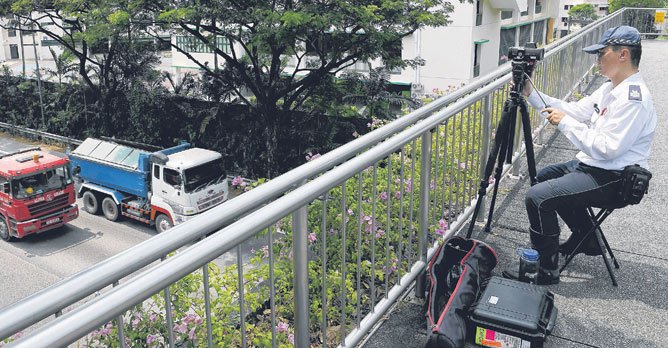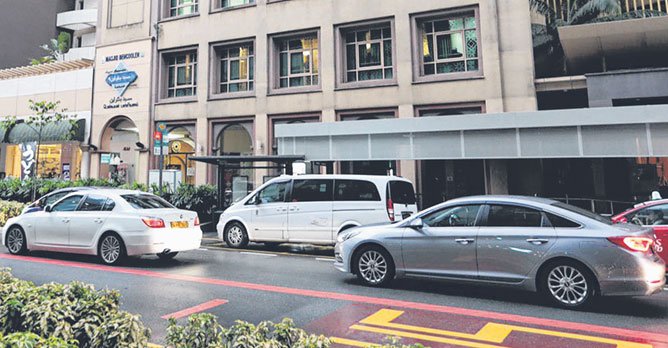Roads safer since pandemic but speeding cases still continue
13 May 2020|382 views
The roads in Singapore are significantly more free-flowing and safer than before the COVID-19 pandemic, even if the percentage of speeding cases and breakdowns has climbed.
The Land Transport Authority said traffic volume has shrunk on average by 60% since the pandemic arrived in January, noting that reduction "varies across locations and time periods".
Given that over 10 million trips are made on the road here a day before the outbreak, the reduction means only four million trips are made today. As a probable consequence, accidents have also come down. The Traffic Police told The Straits Times that traffic accidents have falllen by "more than 40%" since the circuit breaker measures kicked in on 7 April 2020.
This is also significant, given that each year, there are 7,000 to 8,000 accidents involving injury or death. Non-injury accidents, which number around 160,000 a year, are collated by the General Insurance Association, and are not available quarterly.
However, a Traffic Police spokesman noted that the absolute number of speeding violations issued "has remained consistent as compared to pre-circuit breaker" period.
There were on average 15,000 speeding violations per month last year. Excluding public buses (which are unlikely to speed), average road trips had fallen from 201 million per month to 80.4 million after circuit breaker measures were put in place. This translates to 187 violations per million trips - up from 75 previously.

Transport Consultant Gopinath Menon pointed out that Singapore's circuit breaker is unlike "complete lockdowns" instituted in several other cities. Hence a "traffic decrease of 60% looks reasonable".
"I am sure this is felt by all," Mr. Menon, a retired Land Transport Authority Planner, said, adding that buses have also been "much less" crowded. "Many are running less than a quarter full."
Meanwhile, the Automobile Association of Singapore (AAS) witnessed a 9% rise in roadside assistance cases in April compared with April 2019.
AAS Chief Executive Lee Wai Mun said the vast majority of cases (more than two-thirds of the 1,600 or so) pertained to battery or electrical issues. "Non-usage of cars, older cars, and more cameras installed in cars are contributing to this," Mr Lee said.
With the circuit breaker, motorists often leave their vehicles unused for days to weeks on end. This causes the battery to drain continuously, without being recharged by the engine. Experts recommend starting up a car at least once a week to prevent this from happening.
The AAS noted that towing cases fell by 46% in April compared with the same month last year, and 36% lower when compared with the first-quarter average.
Retiree and former Rally Champ William Lyou, 71, said even without a security camera installed, a car battery is in "a constant discharge" because of its immobiliser (an anti-theft device) and the electronic road-pricing unit. Mr. Lyou reckoned that "driving is much safer" overall with the drop in traffic. "The roads are suddenly wider, the air is definitely cleaner - which is also good for the environment," he said.
The roads in Singapore are significantly more free-flowing and safer than before the COVID-19 pandemic, even if the percentage of speeding cases and breakdowns has climbed.
The Land Transport Authority said traffic volume has shrunk on average by 60% since the pandemic arrived in January, noting that reduction "varies across locations and time periods".
Given that over 10 million trips are made on the road here a day before the outbreak, the reduction means only four million trips are made today. As a probable consequence, accidents have also come down. The Traffic Police told The Straits Times that traffic accidents have falllen by "more than 40%" since the circuit breaker measures kicked in on 7 April 2020.
This is also significant, given that each year, there are 7,000 to 8,000 accidents involving injury or death. Non-injury accidents, which number around 160,000 a year, are collated by the General Insurance Association, and are not available quarterly.
However, a Traffic Police spokesman noted that the absolute number of speeding violations issued "has remained consistent as compared to pre-circuit breaker" period.
There were on average 15,000 speeding violations per month last year. Excluding public buses (which are unlikely to speed), average road trips had fallen from 201 million per month to 80.4 million after circuit breaker measures were put in place. This translates to 187 violations per million trips - up from 75 previously.

Transport Consultant Gopinath Menon pointed out that Singapore's circuit breaker is unlike "complete lockdowns" instituted in several other cities. Hence a "traffic decrease of 60% looks reasonable".
"I am sure this is felt by all," Mr. Menon, a retired Land Transport Authority Planner, said, adding that buses have also been "much less" crowded. "Many are running less than a quarter full."
Meanwhile, the Automobile Association of Singapore (AAS) witnessed a 9% rise in roadside assistance cases in April compared with April 2019.
AAS Chief Executive Lee Wai Mun said the vast majority of cases (more than two-thirds of the 1,600 or so) pertained to battery or electrical issues. "Non-usage of cars, older cars, and more cameras installed in cars are contributing to this," Mr Lee said.
With the circuit breaker, motorists often leave their vehicles unused for days to weeks on end. This causes the battery to drain continuously, without being recharged by the engine. Experts recommend starting up a car at least once a week to prevent this from happening.
The AAS noted that towing cases fell by 46% in April compared with the same month last year, and 36% lower when compared with the first-quarter average.
Retiree and former Rally Champ William Lyou, 71, said even without a security camera installed, a car battery is in "a constant discharge" because of its immobiliser (an anti-theft device) and the electronic road-pricing unit. Mr. Lyou reckoned that "driving is much safer" overall with the drop in traffic. "The roads are suddenly wider, the air is definitely cleaner - which is also good for the environment," he said.
Latest COE Prices
May 2025 | 1st BIDDING
NEXT TENDER: 21 May 2025
CAT A$103,009
CAT B$119,890
CAT C$62,590
CAT E$118,889
View Full Results Thank You For Your Subscription.





















